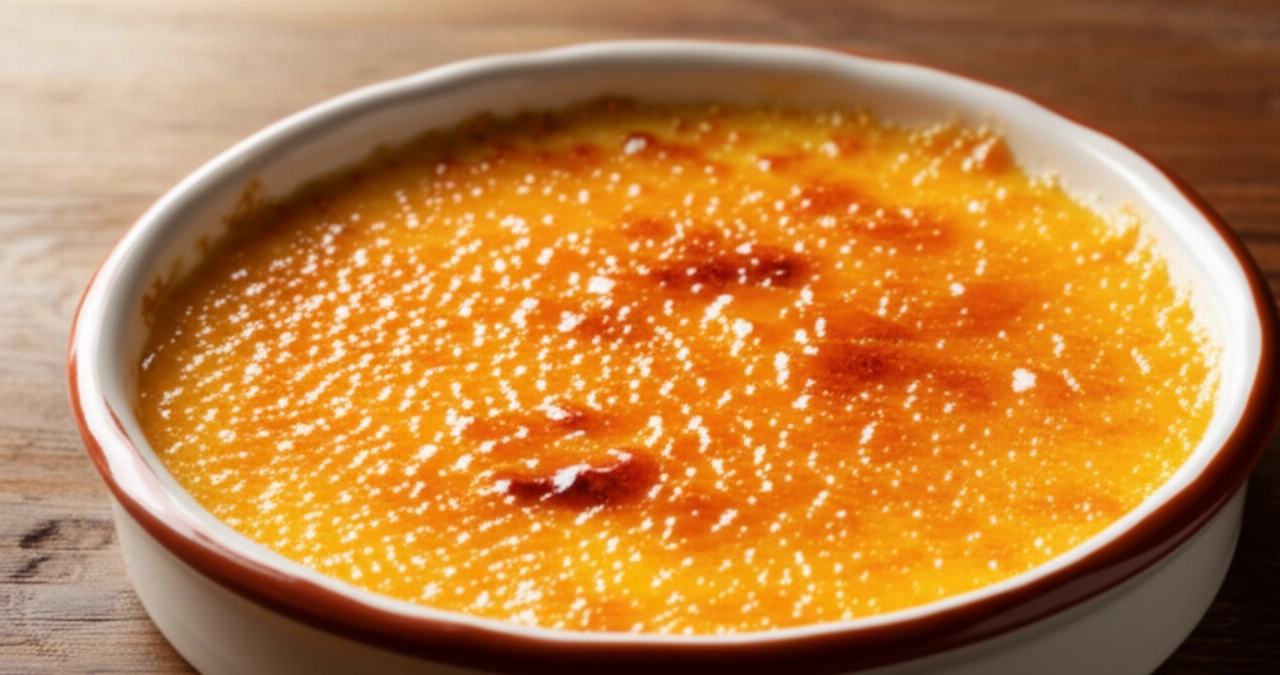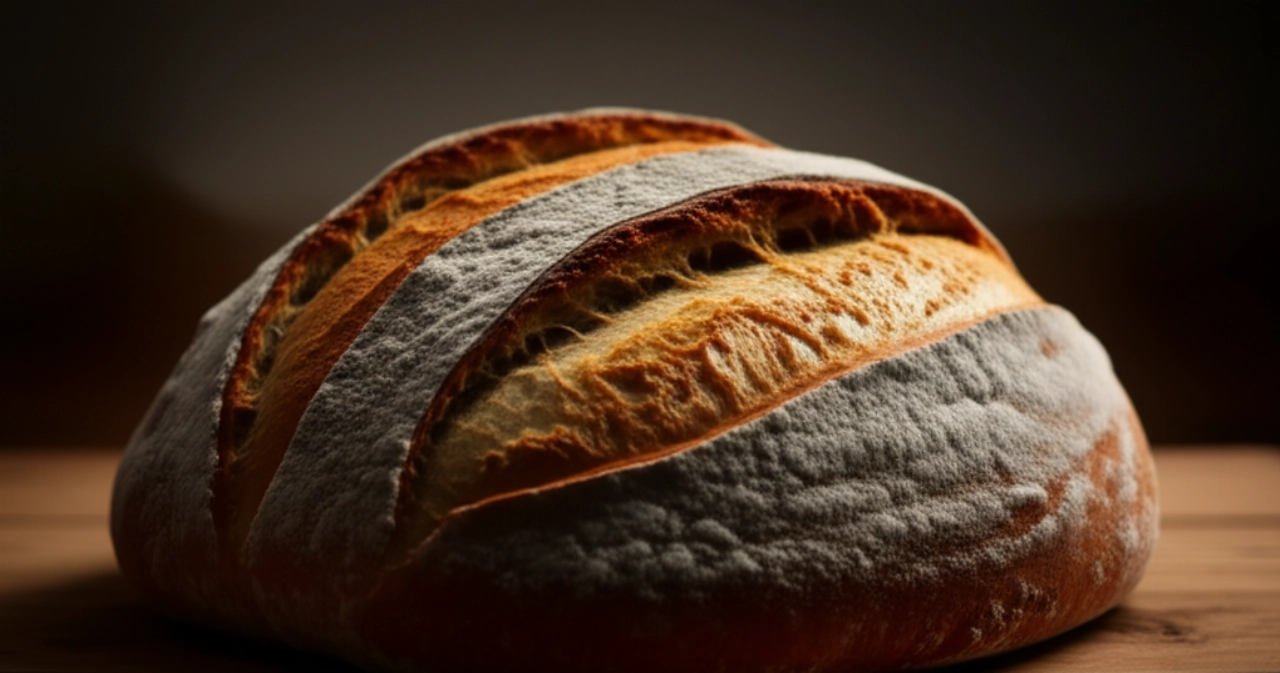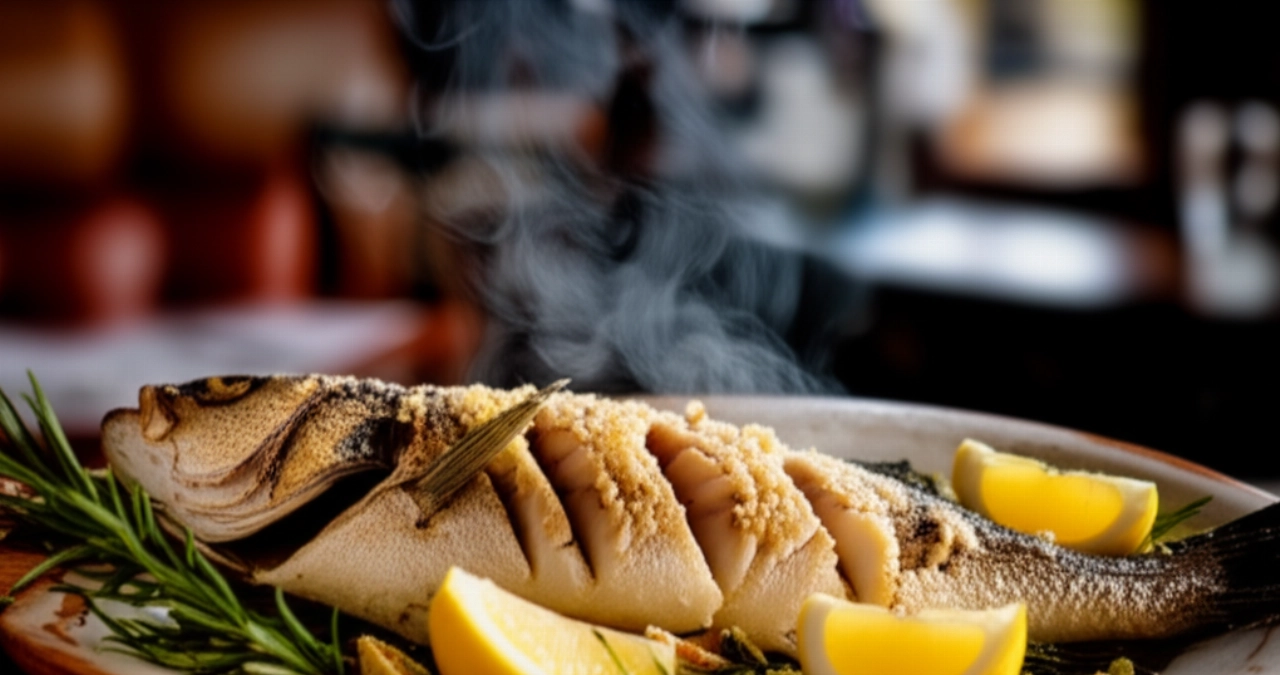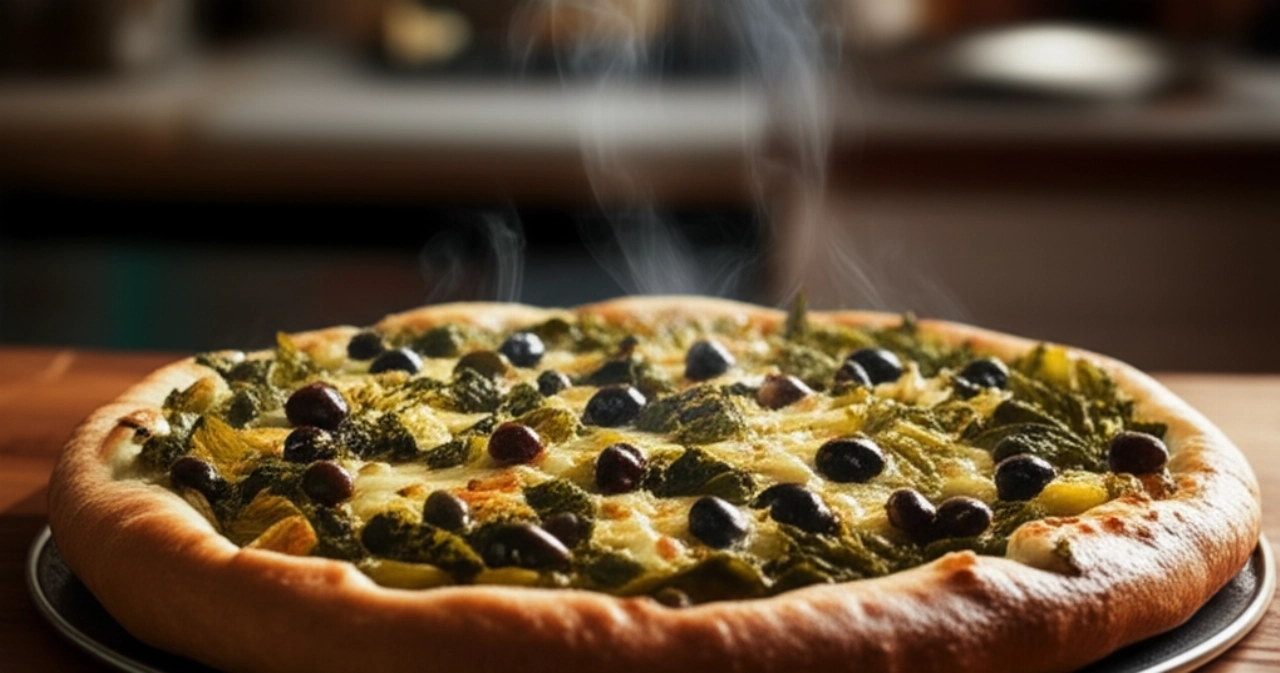Do you dream of baking a Margherita Pizza that makes your guests exclaim "Wow!"? One with a high, fluffy crust, a perfectly crispy base, the intoxicating aroma of tomato, and stringy mozzarella? A true masterpiece that tastes of tradition and home?
Too often, however, homemade pizza can turn into a disappointment: hard dough, flat crust, or a base that looks more like a biscuit than a cloud. The fear of wasting precious time and ingredients is great, and the desire to replicate the magic of the pizzeria seems like a distant mirage.
Make yourself comfortable. Here at Search Recipes, your trusted chef grandma, I reveal not only the recipe, but all the secrets and tricks to prepare the true Neapolitan Margherita Pizza, the one that will make you feel like a real pizzaiolo. I will guide you step by step, clearing all your doubts and guaranteeing a result that will fill you with pride. Success is guaranteed, word from a "guardian" of Italian cuisine!

Ingredients for a Dream Margherita Pizza: The Choice That Makes the Difference
The real magic begins with the ingredients. It's not just a list, but a thoughtful selection, the first step towards perfection.
- Flour: For a high crust and good alveolation, choose a strong flour (type 00 or 0 with W between 280 and 320). This guarantees a strong gluten network, capable of retaining leavening gases.
- Water: Cold, almost iced. Cold water slows down yeast activity, allowing for slower, more controlled leavening, essential for the development of aromas and structure. Hydration is high, about 60-65% relative to the flour.
- Fresh Brewer's Yeast: Very little! For a long leavening, a minimal amount is enough. Too much yeast speeds up the process but compromises flavor and digestibility.
- Salt: Not just for flavor, but also for the dough's structure. Always add it at the end, away from the yeast, so as not to inhibit its action.
- Extra Virgin Olive Oil: A drizzle in the dough to make it more elastic and soft. And then, of course, a generous drizzle raw on the pizza before baking, for an unmistakable aroma and flavor.
- Tomato: San Marzano DOP tomato passata is the excellent choice. Sweet, low in acidity, with few seeds. If you can't find it, a good quality tomato passata will be perfect. Don't season it too much, just a pinch of salt and a drizzle of oil are enough.
- Mozzarella: Absolutely fior di latte, not the already dry pizza mozzarella! Fior di latte has the right moisture to melt without releasing too much water. Cut it into cubes and let it drain for at least an hour before using.
- Fresh Basil: Basil leaves should be added only at the end of cooking, or almost, to preserve their aroma and bright color.

The 3 Common Mistakes in Margherita Pizza (and How to Avoid Them)
Every pizzaiolo, even the most experienced, has learned from their mistakes. I'll reveal the most common ones, so you won't have to make them!
- Not Respecting Leavening Times: Haste is the enemy of good pizza. Dough that hasn't risen enough will be hard and difficult to digest. Let nature take its course, even for 12-24 hours.
- Working the Dough Too Little or Too Much: If you work it too little, a good gluten network won't develop, and the pizza will be flat. If you work it too much, it overheats and becomes sticky. Balance is key: work until it's smooth and elastic.
- Not Preheating the Oven Properly: This is the secret to a high crust and a crispy base. The oven must be scorching hot, at maximum temperature, for at least 30-45 minutes before baking. If you have a pizza stone, use it!

The Magic Touch: The Secret for a Perfect Crust Revealed by the Pizzaiolo
When I was a girl, I spent hours watching the neighborhood pizzaiolo. One day, as he incredibly skillfully stretched the dough, he told me: "Grandma, the secret isn't strength, but delicacy. And never flatten the edge!".
Here's the trick: when stretching the dough, start from the center and push the air towards the edges, without ever touching the crust. That part, rich in air bubbles, will puff up during baking, giving you a high, soft, and airy crust, just like those from Neapolitan pizzerias. That's where the magic of true pizza hides!
Let's Prepare Margherita Pizza Together: The Step-by-Step Guide
Ingredients for 2 Medium Pizzas
- Flour 00 or 0 (W 280-320): 300 g
- Cold water: 190-200 ml (approx. 63-66% hydration)
- Fresh brewer's yeast: 1-2 g (or 0.5 g active dry yeast)
- Fine salt: 8-9 g
- Extra virgin olive oil: 1 tablespoon
- San Marzano tomato passata: 200 g
- Fior di latte mozzarella: 250 g
- Fresh basil: to taste
Necessary Tools
- Stand mixer or large bowl
- Spatula or dough scraper
- Plastic wrap
- Baking sheet or pizza stone
- Pizza peel (optional)
Method
1. The Perfect Dough (Bulk Fermentation)
- In a large bowl (or stand mixer), dissolve the yeast in cold water.
- Gradually add the flour, mixing with a spatula or the stand mixer's dough hook at low speed. When the dough starts to form, add the salt.
- Continue kneading for about 10-15 minutes, until the dough is smooth, homogeneous, and elastic. Only at the end, add the extra virgin olive oil and incorporate it completely. The dough should be slightly sticky but well-developed.
- Form a ball, lightly grease it with a drizzle of oil, and place it in a large bowl. Cover with plastic wrap and let it rest at room temperature for 1-2 hours (bulk fermentation), then transfer it to the refrigerator for at least 12-24 hours. This long, slow leavening is the secret to digestibility and flavor.
2. Dividing and Proofing
- The next day (or after refrigeration), take the dough out of the refrigerator at least 2-3 hours before using it, to allow it to return to room temperature.
- On a lightly floured surface, divide the dough into two balls of about 250-270 g each.
- Form balls (dividing) by folding the edges of the dough towards the center, until you get a smooth and taut surface.
- Arrange the dough balls on a floured tray, well spaced apart, cover with plastic wrap or a damp cloth and let them rise again for 2-3 hours at room temperature (proofing). They should double in volume and be very soft.
3. Preparing the Topping Ingredients
- While the dough is proofing, prepare the mozzarella: cut it into cubes and place it in a colander for at least an hour, so it will lose excess water and won't make the pizza soggy.
- Season the tomato passata with a pinch of salt and a drizzle of extra virgin olive oil. Don't add anything else, simplicity is key.
4. Stretching and Topping the Pizza
- Preheat the oven to its maximum temperature (250-280°C, if your oven allows), with the baking sheet or pizza stone inside, for at least 30-45 minutes. It's crucial that it's scorching hot!
- Take a dough ball and, on a surface well floured with durum wheat semolina (helps prevent sticking), gently stretch it with your hands, starting from the center and pushing the air towards the edges. Do not use a rolling pin and do not flatten the crust! The goal is to obtain a thin disc in the center with a thicker edge.
- Transfer the dough disc to a floured pizza peel or directly onto parchment paper.
- Spread the tomato over the base, leaving the crust free.
- Add the well-drained mozzarella.
- Finish with a drizzle of extra virgin olive oil.
5. The Perfect Baking
- Bake the pizza, gently sliding it onto the scorching hot baking sheet or pizza stone.
- Bake for about 5-8 minutes, or until the crust is well puffed and golden and the mozzarella is melted and slightly browned. Times vary greatly from oven to oven. If your oven has a grill function, you can use it for the last few minutes to give the crust a boost.
- Remove the pizza from the oven, add a few fresh basil leaves, and serve immediately.
Tips and Frequently Asked Questions about Margherita Pizza
- Which flour is best for pizza?
- For true Neapolitan pizza, a strong flour (type 00 or 0 with W between 280 and 320) is ideal. This value indicates the flour's ability to form a robust gluten network, essential for long leavening and an airy crust.
- Can I use sourdough starter instead of brewer's yeast?
- Absolutely! Sourdough starter will give your pizza an even more complex flavor and greater digestibility. The quantities and leavening times will change, but the result will be exceptional. We recommend consulting our specific guide on using sourdough starter for pizza.
- How can I get a high and puffy crust even without a wood-fired oven?
- The secret lies in preheating the oven to its maximum temperature for at least 30-45 minutes before baking. If you have a pizza stone or a cast iron pan, use them! The intense and immediate heat is what makes the crust "explode". Never flatten the edge during stretching.
- Can I prepare the pizza dough in advance?
- Certainly, in fact, it's recommended! A long cold fermentation in the refrigerator (12-24 hours) significantly improves the digestibility and flavor of the pizza. You can prepare the dough the day before and let it mature slowly.
- Why is my pizza gummy or dry?
- It could be for several reasons: poorly worked dough, insufficient leavening, oven not hot enough, or too long baking time. Make sure to carefully follow the dough steps, respect the leavening times, and, most importantly, bake the pizza at very high temperatures for a short time.
There you have it! Now you no longer just have a recipe, but all the secrets to bring a Margherita Pizza to your table that tastes of home, tradition, and love. A dish that will make you feel like a true kitchen artist, capable of bringing unforgettable smiles and aromas.
Don't be afraid to experiment and make this recipe your own. Cooking is an act of creativity, but with this solid foundation, you'll see that applause won't be lacking. Every pizza will be a success, every bite a journey into the heart of Italy.
Have you tried our recipe? We're very curious to see your masterpiece! Leave a comment below, tell us how it went, or share a photo on Instagram by tagging @CercaRicette.it. If you loved this Margherita Pizza, you can't miss our recipe for the Original Genovese Focaccia or for another icon like the Perfect Pasta Carbonara. We're waiting for you in the kitchen!





